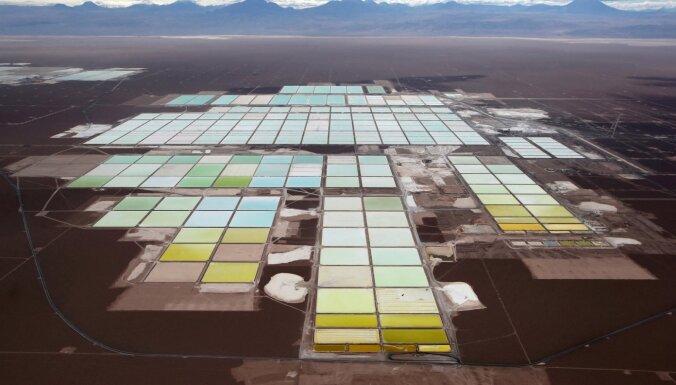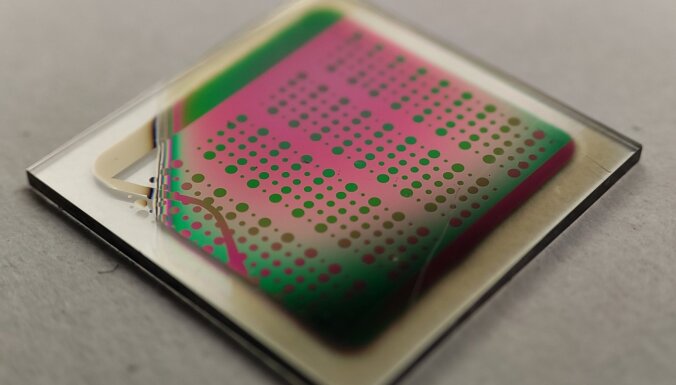Currently, lithium-ion batteries are used almost everywhere – in the largest and smallest portable smart devices and computers, wireless headphones, electric tools, household appliances and also in electric vehicles. They have many advantages, it’s not for nothing that it has been the industry standard for years. However, there are also downsides, which is why one of the next big technological breakthroughs could be a new type of battery. Many teams of materials scientists around the world are working on this, and researchers from the Technical University of Vienna offer their solution – oxygen ion batteries.
Content will continue after the ad
Advertising
The importance of lithium-ion batteries is hard to overestimate. It is not for nothing that Akira Yoshino and John Goodinough were awarded the Nobel Prize in Chemistry in 2019 for their contribution to the development of this battery technology. They have good energy density (how much energy can be stored in a given volume unit). Depending on the various nuances, the lithium-ion battery can store from 250 to 670 watt-hours per liter of material. Self-discharge is also not as big a problem as, for example, nickel-cadmium batteries. In the first day after charging, a lithium-ion battery loses about five percent of its charge, and after that only one to two percent per month. They can also be very compact and operate in a temperature range suitable for everyday electronics. So what are the cons?
First, lithium mining. It is not considered a rare chemical element, but it does not occur in free form in nature, because it strongly reacts with water and oxygen. Some of the most widely used lithium extraction methods are resource and time intensive. For example, one of the richest lithium deposits is in poor Bolivia. There, lithium is extracted by pumping salt water from underground reservoirs and draining it into the reservoirs, where it gradually evaporates, leaving behind an increasingly concentrated solution. In the process, a mass of slaked lime and water are added to it, which also helps elements such as magnesium and boron to evaporate from the solution. When the concentration of lithium in the solution has reached a certain level, it is purified from other unwanted elements and the lithium is extracted with the help of chemical treatment. Extraction of lithium from minerals is an even more “noble” process in terms of energy consumption.

Secondly, although lithium-ion batteries have a very good life cycle, every smartphone and laptop user will have encountered the experience that after a few years the battery of the device has worn out significantly – if the phone “lasted” the whole day without problems at first, now it leaves the house without a charger better not to go out.
Third, if damaged, lithium-ion batteries can catch fire when the lithium reacts with oxygen in the air or with water. There have been cases when manufacturers had to withdraw products from the market due to the risks caused by defective batteries, as was the case with the “Samsung Galaxy Note 7” smartphones.
Oxygen-ion batteries promise to solve all these problems. Their production does not require rare earth elements or elements whose extraction is a complex and resource-intensive process. They also have an excellent life cycle and hardly wear out, and there is no need to worry about fire safety. How does this technology work? They are batteries of ceramic materials, but oxygen ions are the charge carrier from the anode to the cathode.
“We have a lot of experience with ceramic materials that can be used in the production of fuel cells. The idea arose to investigate whether these materials could not also be used in the production of batteries,” explains one of the authors of the study, Aleksandrs Šmits, a researcher at the Institute of Chemical Technology and Analysis of the Technical University of Vienna, in a statement to the media. The ceramic materials studied by his team can absorb and release doubly negatively charged oxygen ions. Ions, “migrating” from one ceramic material to another and back, generate current. The basic principle is almost the same as for lithium-ion batteries. Only the materials differ.

“Ceramic materials have significant advantages,” explains Professor Jurgens Flieg, and he cites fire safety as an example, as well as the fact that the use of ceramic materials does not require an environmentally unfriendly extraction process of useful metals. Oxygen ion batteries can also regenerate – if oxygen is lost as a result of side reactions, it will be replaced by oxygen from the surrounding air.
If something sounds too good to be true, remember that it probably isn’t. Therefore, this battery also has its disadvantages. These batteries, if and when they come into circulation, will not be suitable for smartphones or laptops. First, the energy density is only about a third of that of lithium-ion batteries. It is not excluded that as a result of the improvement of the technology, it would be improved over time. But currently, an oxygen-ion battery can store much less energy than an identically sized lithium-ion battery.
Second, oxygen ion batteries operate at high temperatures – between 200 and 400 degrees Celsius. It will not be something that we can comfortably keep in our pocket.
However, this technology has huge potential in a rapidly growing field – battery “farms” for storing energy produced by so-called green methods. For example, solar panels produce and feed energy into the grid during the day, but the excess is stored in oxygen-ion batteries to be available for use during the dark hours of the day. Seeing the wide application of this invention in the future, the team of the Technical University of Vienna has already prepared a patent application.
2023-05-23 03:00:04
#type #battery #promises #solve #important #shortcomings #lithium #batteries

:format(jpg):quality(99):watermark(f.elconfidencial.com/file/0f2/6d9/13e/0f26d913e1b27ca111e62b656aa354da.png,0,275,1)/f.elconfidencial.com/original/dc3/ee2/bc7/dc3ee2bc7613cba37847f594ae6edd66.jpg)